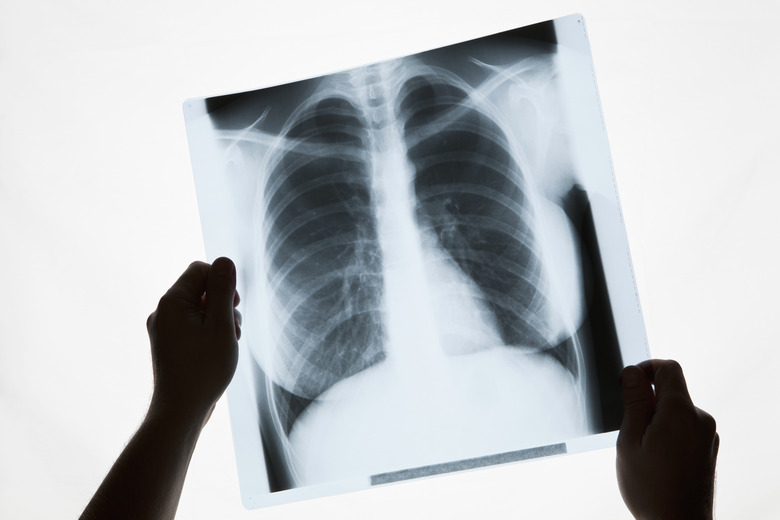Science Fair Projects For Lung Capacity
Science fair students at all ages must follow guidelines that generally require the student to design an experiment, develop a hypothesis, or guess, as to what the experiment will show, and to make a conclusion about whether the experiment confirmed or rejected the hypothesis. Projects dealing with lung capacity for younger grades may be quite simple, while older students should undertake something more complex. Any student doing a lung capacity related science fair project should have the ability to give at least a basic explanation of what lung capacity means.
Lung Capacity Project for Elementary School
Lung Capacity Project for Elementary School
An appropriate lung capacity project for an elementary school-age student should include pictures of the lungs and their location in the body and a short written explanation of the lungs' purpose. Students at this age could form a hypothesis about whether boys or girls have more lung capacity, or whether adults or children have more lung capacity. A simple experiment could involve testing which group can more fully inflate a plastic bag, or which group can blow up a balloon the fastest.
Lung Capacity Project for Middle School
Lung Capacity Project for Middle School
Students at the middle school or junior high level should include a written report on lung capacity and develop a hypothesis grounded in science, rather than a simple guess. The experiment should also be more complex than that of younger students. A sample project could involve measuring the difference in lung capacity when a person is at rest as compared to lung capacity immediately following strenuous exercise. Students at this level should use a method of measuring results that has a measure of accuracy. An example might be having the test subject blow through a straw into a full bowl of water and comparing the volume of water displaced before and after exercise.
Lung Capacity Project for High School
Lung Capacity Project for High School
High school science fair projects should demonstrate a thorough knowledge of the subject area, through a referenced written report, a concise and accurate oral presentation and a detailed visual presentation. A high school project may examine how exercise increases the amount of carbon dioxide in a test subject's breath. The student would have the test subject blow into water through a straw, and by measuring the color of a bromothymol blue solution, create a baseline for carbon dioxide exhalation. After exercise, the test subject would again blow into the water creating a post-exercise reading for carbon dioxide exhalation. The difference in the water's carbon dioxide levels as shown by the changed color would reflect changes in carbon dioxide production before and after exercise.
Cite This Article
MLA
Boyd, Karen. "Science Fair Projects For Lung Capacity" sciencing.com, https://www.sciencing.com/science-fair-projects-for-lung-capacity-12745543/. 19 September 2010.
APA
Boyd, Karen. (2010, September 19). Science Fair Projects For Lung Capacity. sciencing.com. Retrieved from https://www.sciencing.com/science-fair-projects-for-lung-capacity-12745543/
Chicago
Boyd, Karen. Science Fair Projects For Lung Capacity last modified August 30, 2022. https://www.sciencing.com/science-fair-projects-for-lung-capacity-12745543/
